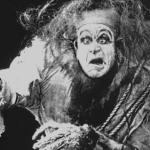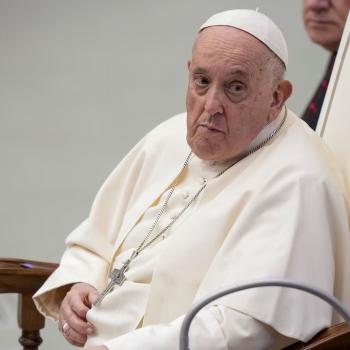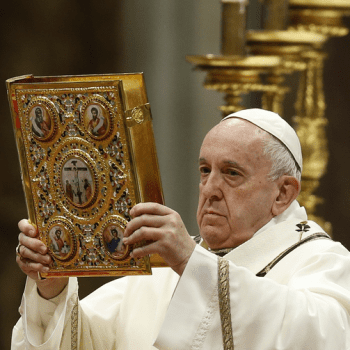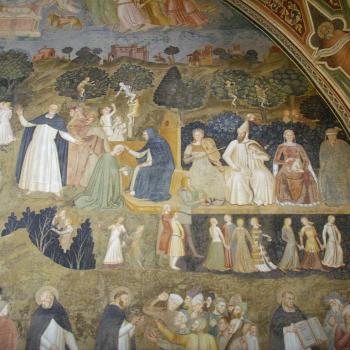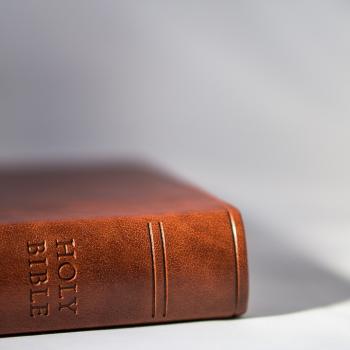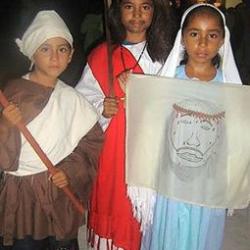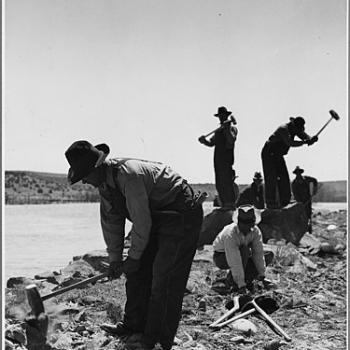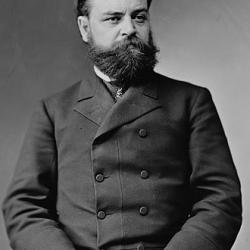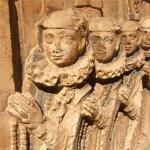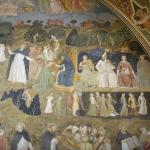I find that the creative commons source known as Dr. Wikipedia has provided me with a great description of the ideas and thoughts that I am editing and stringing together. So it says….
Doctor of the Church is a title given by the Catholic Church to saints recognized as having made a significant contribution to theology or doctrine through their research, study, or writing.
As of 2024, the Catholic Church has named 37 Doctors of the Church. Of these, the 18 who died before the Great Schism of 1054 are also held in high esteem by the Eastern Orthodox Church, although it does not use the formal title Doctor of the Church.
Among the 37 recognised Doctors, 28 are from the West and nine from the East; four are women and thirty-three are men; one is an abbess, three are nuns, and one is a tertiary associated with a religious order; two are popes, 19 are bishops, twelve are priests, and one is a deacon; and 27 are from Europe, three are from Africa, and seven are from Asia. More Doctors (twelve) lived in the fourth century than any other; eminent Christian writers of the first, second, and third centuries are usually referred to as the Ante-Nicene Fathers. The shortest period between death and nomination was that of Alphonsus Liguori, who died in 1787 and was named a Doctor in 1871 – a period of 84 years; the longest was that of Irenaeus, which took more than eighteen centuries.
And so the Catholic Bard proudly presents to you the….
Doctors of the 1st Millenium Church
Dr. St.Irenaeus
(c. 130 – c. 202 AD)
Feast: June 28
St. Irenaeus (Doctor of Unity) became a Doctor of the Church in 2022.
Irenaeus was a Greek bishop noted for his role in guiding and expanding Christian communities in the southern regions of present-day France and, more widely, for the development of Christian theology by combating heterodox or Gnostic interpretations of Scripture as heresy and defining proto-orthodoxy. Originating from Smyrna, he had seen and heard the preaching of Polycarp, who in turn was said to have heard John the Evangelist, and thus was the last-known living connection with the Apostles.
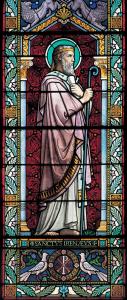
“He who was the Son of God became the Son of man, that man … might become the son of God.”
― Against Heresies
Dr. St. Athanasius of Alexandria
(c. 296–298 – May 2, 373)
Feast: May 2
St. Athanasius became a Doctor of the Church in 1568 and is considered one of the four Great Greek Fathers.
Athanasius was a Church Father, the chief proponent of Nicene theology against the anti-Nicenes, and a noted Egyptian Christian leader of the fourth century.
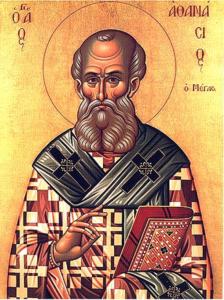
“Dead men cannot take effective action; their power of influence on others lasts only till the grave. Deeds and actions that energise others belong only to the living. Well, then, look at the facts in this case. The Saviour is working mightily among men, every day He is invisibly persuading numbers of people all over the world, both within and beyond the Greek-speaking world, to accept His faith and be obedient to His teaching. Can anyone, in face of this, still doubt that He has risen and lives, or rather that He is Himself the Life? Does a dead man prick the consciences of men…?”
— Athanasius of Alexandria (On the Incarnation)
Dr. St. Ephrem the Syrian
c. 306 – 373)
Feast: June 9
Patron: Spiritual directors and spiritual leaders
St. Ephrem became a Doctor of the Church in 1920.
Ephrem was a prominent Christian theologian and writer, who is revered as one of the most notable hymnographers of Eastern Christianity.
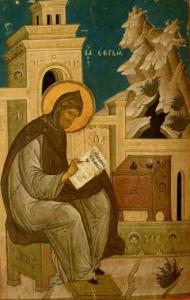
O Lord and Master of my life, a spirit of idleness, curiosity, ambition, and idle talking; give me not.
But a spirit of chastity, humility, patience, and love, bestow upon me, Thy servant.
Yea, O Lord King: grant me to see mine own failings, and not to condemn others; for blessed art Thou unto the ages of ages. Amen.
Prayer of Saint Ephrem – Wikipedia
Dr. St. Hilary of Poitiers
(c. 310 – c. 367)
Feast: January 13
St. Hilary became a Doctor (of the Divinity of Christ) of the Church in 1851.
Hilary was Bishop of Poitiers He was sometimes referred to as the “Hammer of the Arians” (and the “Athanasius of the West” His name comes from the Latin word for happy or cheerful. In addition to his important work as bishop, Hilary was married and the father of Abra of Poitiers, a nun and saint who became known for her charity.
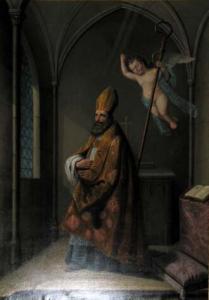
The Son of God is nailed to the cross; but on the cross God conquers human death. Christ, the Son of God, dies; but all flesh is made alive in Christ. The Son of God is in hell; but man is carried back to heaven.“On the Trinity,” Book III, 15.
Dr. St. Cyril of Jerusalem
(c. 313 – 386)
Feast: March 18
St. Cyril became a Doctor of the Church in 1883.
Cyril was a theologian of the early Church. About the end of AD 350, he succeeded Maximus as Bishop of Jerusalem, but was exiled on more than one occasion due to the enmity of Acacius of Caesarea, and the policies of various emperors. Cyril left important writings documenting the instruction of catechumens and the order of the Liturgy in his day.
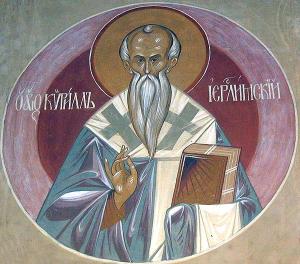
It is not only among us, who are marked with the name of Christ, that the dignity of faith is great; all the business of the world, even of those outside the Church, is accomplished by faith. By faith, marriage laws join in union persons who were strangers to one another. By faith, agriculture is sustained; for a man does not endure the toil involved unless he believes he will reap a harvest. By faith, seafaring men, entrusting themselves to a tiny wooden craft, exchange the solid element of the land for the unstable motion of the waves, committing themselves to uncertain hopes, and carrying with them a faith more sure than any anchor. By faith therefore most of men’s affairs are held together: and not among us only has there been this belief, but also, as I have said, among those who are without. For if they receive not the Scriptures, but bring forward certain doctrines of their own, even these they accept by faith.”
–CHURCH FATHERS: Catechetical Lecture 5 (Cyril of Jerusalem) (newadvent.org)
Catholic Ecumenical Council #1
The First Council of Nicaea (325)
Dr. St. Gregory of Nazianzus (c. 329 – 25 January 25, 390)
Feast: January 2 (My Wedding Anniversary)
St. Gregory became a Doctor of the Church in 1568.
Gregory was a 4th-century archbishop of Constantinople and theologian. He is widely considered the most accomplished rhetorical stylist of the patristic age. As a classically trained orator and philosopher, he infused Hellenism into the early church, establishing the paradigm of Byzantine theologians and church officials.
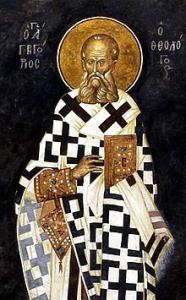
Philosophize about the world or worlds; about matter; about soul; about natures endowed with reason, good or bad; about resurrection, about judgment, about reward, or the Sufferings of Christ. For in these subjects to hit the mark is not useless, and to miss it is not dangerous. – First Theological Oration (Oration 27), IX.
Dr. St. Basil of Caesarea ( 330 – January 1 or 2, 379)
Feast: January 2
St. Basil became a Doctor of the Church in 1568.
Basil, together with his brother Gregory of Nyssa and his friend Gregory of Nazianzus, are collectively referred to as the Cappadocian Fathers. The Eastern Orthodox Church and Eastern Catholic Churches have given him, together with Gregory of Nazianzus and John Chrysostom, the title of Great Hierarch.

“When someone steals another’s clothes, we call them a thief. Should we not give the same name to one who could clothe the naked and does not? The bread in your cupboard belongs to the hungry; the coat unused in your closet belongs to the one who needs it; the shoes rotting in your closet belong to the one who has no shoes; the money which you hoard up belongs to the poor.”
Saintly Family Tree
St. Macrina the Elder – (before AD 270 – c. 340) is the mother of Basil the Elder.
St Basil the Elder married Emmelia of Caesarea (May 30, 375)
They were instructed by St. Gregory Thaumaturgus – c. 213 – 270), (“the Wonder Worker”).
Basil and Emmelia had 10 children, six saints and four whose names are unknown.
St. Basil the Great was a bishop, a Doctor of the Church, and a Church Father.
His brother St. Gregory of Nyssa was a bishop and a Church Father.
Their brother St. Peter of Sebaste was a bishop.
Their brother St. Naucratios was a hermit.
Their sister St. Macrina the younger was a nun and a foundress
while their other sister St. Theosebia – was a deaconess.
Dr. St. Ambrose (c. 339 – 4 April 397)
Feast: December 7
Ambrose became a Doctor of the Church in 1568.
He was a theologian and statesman who served as Bishop of Milan from 374 to 397. He expressed himself prominently as a public figure, fiercely promoting Roman Christianity against Arianism and paganism. He left a substantial collection of writings and his preachings, his actions and his literary works, in addition to his innovative musical hymnography, made him one of the most influential ecclesiastical figures of the 4th century.
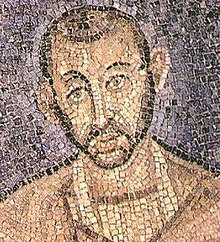
“You are not making a gift of what is yours to the poor man, but you are giving him back what is his. You have been appropriating things that are meant to be for the common use of everyone. The earth belongs to everyone, not to the rich.”
-(22) De Nabute, c. 12, n. 53: PL 14. 747; cf. J. R. Palanque, Saint Ambroise et l’empire romain, Paris: de Boccard (1933), 336 ff.
Quoted from Pope Paul VI Populorum Progressio (March 26, 1967) | Paul VI (vatican.va)
Dr. St. John Chrysostom (c. 347 – 14 September 407)
Feast: September 13
John became a Doctor of the Church in 1568.
He was an important Early Church Father who served as archbishop of Constantinople. He is known for his preaching and public speaking, his denunciation of abuse of authority by both ecclesiastical and political leaders, his Divine Liturgy of Saint John Chrysostom, and his ascetic sensibilities. The epithet Χρυσόστομος (Chrysostomos, anglicized as Chrysostom) means “golden-mouthed” in Greek and denotes his celebrated eloquence.[1][7] Chrysostom was among the most prolific authors in the early Christian Church.
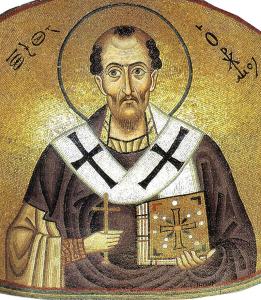
Do you wish to honor the Body of the Savior? Do not despise it when it is naked. Do not honor it in church with silk vestments while outside it is naked and numb with cold. He who said, “This is my body,” and made it so by his word, is the same that said, “You saw me hungry and you gave me no food. As you did it not to the least of these, you did it not to me.” Honor him then by sharing your property with the poor. For what God needs is not golden chalices but golden souls. Homilies on the Gospel of Saint Matthew, Homily L
If you cannot find Christ in the beggar at the church door,
you will not find Him in the chalice.
Attributed to St. John Chrysostom, this may be a short paraphrase of Homily 50.4 on the Gospel of Matthew.
Dr. St. Jerome c. 342–347 – September 20, 420)
Feast: September 30
Jerome became a Doctor of the Church in 1298.
He is best known for his translation of the Bible into Latin (the translation that became known as the Vulgate) and his commentaries on the whole Bible. Jerome attempted to create a translation of the Old Testament based on a Hebrew version, rather than the Septuagint, as prior Latin Bible translations used. His list of writings is extensive. In addition to his biblical works, he wrote polemical and historical essays, always from a theologian’s perspective.
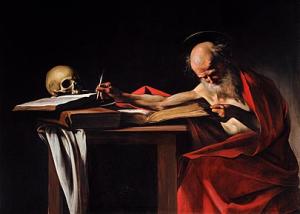
Ignoratio Scripturarum, ignoratio Christi est.
Ignorance of the Scriptures is ignorance of Christ.
Commentary on Isaiah, Prologue
Dr. St. Augustine of Hippo
( November 354 – 28 August 28, 430)
Feast: August 28
Augustine became a Doctor of the Church in 1298.
He was a theologian and philosopher of Berber origin and the bishop of Hippo Regius in Numidia, Roman North Africa. His writings influenced the development of Western philosophy and Western Christianity, and he is viewed as one of the most important Church Fathers of the Latin Church in the Patristic Period. His many important works include The City of God, On Christian Doctrine, and Confessions.
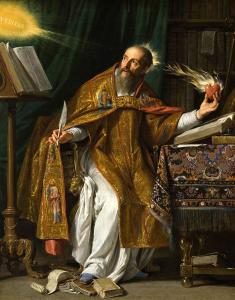
In AD 397 and 400 Dr. St. Augustine of Hippo crafted his Confessions, which is an autobiography that recounts his intellectual and spiritual development. He became a Doctor (One of the four Great Latin Fathers; (Doctor of Grace) of the church in 1298.
“And men go abroad to admire the heights of mountains, the mighty waves of the sea, the broad tides of rivers, the compass of the ocean, and the circuits of the stars, yet pass over the mystery of themselves without a thought.”
“Thou hast made us for thyself, O Lord, and our heart is restless until it finds its rest in thee.”
― Confessions
Dr. St. Cyril of Alexandria (c. 376 – 444)
Feast: June 27
Cyril became a Doctor of the Church in 1883.
He was the Patriarch of Alexandria from 412 to 444. He was enthroned when the city was at the height of its influence and power within the Roman Empire. Cyril wrote extensively and was a major player in the Christological controversies of the late-4th and 5th centuries. He was a central figure in the Council of Ephesus in 431, which led to the deposition of Nestorius as Patriarch of Constantinople. Cyril is counted among the Church Fathers and his reputation within the Christian world has resulted in his titles Pillar of Faith and Seal of all the Fathers. The Nestorian bishops at their synod at the Council of Ephesus declared him a heretic, labelling him as a “monster, born and educated for the destruction of the church.”
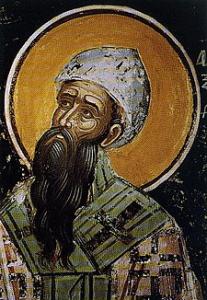
That anyone could doubt the right of the holy Virgin to be called the Mother of God fills me with astonishment. Surely she must be the Mother of God if our Lord Jesus Christ is God, and she gave birth to him! Our Lord’s disciples may not have used those exact words, but they delivered to us the belief those words enshrine, and this has also been taught us by the holy fathers.
As quoted in 5 Inspiring quotes from St. Cyril of Alexandria (June 27, 2017)
Dr. St. Peter Chrysologus (c. 380 – c. 450)
Feast: July 30
Peter became a Doctor of the Church in 1729.
He was Bishop of Ravenna from about 433 until his death. He is known as the “Doctor of Homilies” for the concise but theologically rich reflections he delivered during his time as the Bishop of Ravenna.
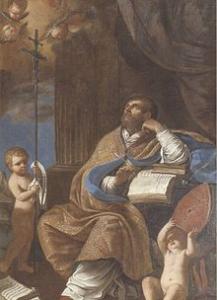
“He is The Bread sown in the virgin, leavened in the Flesh, molded in His Passion, baked in the furnace of the Sepulchre, placed in the Churches, and set upon the Altars, which daily supplies Heavenly Food to the faithful.”-
Catholic Ecumenical Council #2
The First Council of Constantinople (381)
Pope # 45 Dr. St. Leo I (c. 400 –November 10, 461),
also known as Leo the Great
Feast: November 11
Leo became a Doctor of the Church in 1754.
He was Bishop of Rome from September 29 440 – November 10, 461.
Leo was a Roman aristocrat, and was the first pope to have been called “the Great”. He is perhaps best known for having met Attila the Hun in 452 and persuading him to turn back from his invasion of Italy. He is most remembered theologically for issuing the Tome of Leo, a document which was a major foundation to the debates of the Council of Chalcedon, the fourth ecumenical council. That meeting dealt primarily with Christology and elucidated the orthodox definition of Christ‘s being as the hypostatic union of two natures, divine and human, united in one person, “with neither confusion nor division”. It was followed by a major schism associated with Monophysitism, Miaphysitism and Dyophysitism. He also contributed significantly to developing ideas of papal authority.
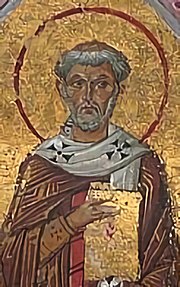
For he who is true God is also true man; and there is no deception in this union, where the loftiness of God and the lowliness of man are brought together. Just as God is not changed by his act of mercy, so man is not swallowed up by the dignity. Each form acts in cooperation with the other, according to its own nature: the activity of the Word is that which is appropriate to the Word, and the flesh carries out that which is appropriate to it.
One of these is ablaze with miracles, the other is overcome by injuries. As the Word does not cease to be on an equality with the glory of the Father, so the flesh does not cease to belong to the nature of our race.
For it must always be said that the one and the same Jesus is truly Son of God, and truly son of man. He is God insofar as in the beginning he was the Word, and the Word was with God, and the Word was God. And he is man insofar as the Word became flesh and dwelt among us.”
A reading from the letters of Pope St Leo the Great (Letter 28, 3-4)
Catholic Ecumenical Council # 3
The Council of Ephesus (431)
Catholic Ecumenical Council # 4
The Council of Chalcedon (451)
Pope # 64 Dr. St.Gregory I
commonly known as Saint Gregory the Great
(c. 540 –March 12, 604),
Feast: September 3
Gregory became a Doctor of the Church in 1298.
He was Bishop of Rome from September 3 590 to March 12, 604. He is known for instituting the first recorded large-scale mission from Rome, the Gregorian mission, to convert the then largely pagan Anglo-Saxons to Christianity. Gregory is also well known for his writings, which were more prolific than those of any of his predecessors as pope. The epithet Saint Gregory the Dialogist has been attached to him in Eastern Christianity because of his Dialogues.
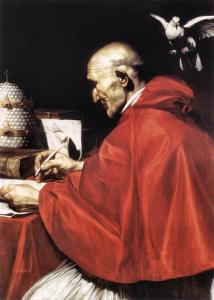
The mainstream form of Western plainchant, standardized in the late 9th century, was attributed to Pope Gregory I and so took the name of Gregorian chant. The earliest such attribution is in John the Deacon’s 873 biography of Gregory, almost three centuries after the pope’s death, and the chant that bears his name “is the result of the fusion of Roman and Frankish elements which took place in the Franco-German empire under Pepin, Charlemagne and their successors”.
“Moreover, because the slothful mind is typically brought to its downfall gradually, when we fail to control our speech, we move on to more harsh words. Thus, at first, we are happy to speak of others kindly; afterwards, we begin to pick at the lives of those of whom we speak, and finally our tongues break into open slander against them.”
― The Book of Pastoral Rule
Catholic Ecumenical Council # 5
The Second Council of Constantinople (553)
Dr. St. Isidore of Seville (c. 560 –April 4, 636)
Feast: April 4
Isodore became a Doctor of the Church in 1722.
He was a Hispano-Roman scholar, theologian, and archbishop of Seville. He is widely regarded, in the words of 19th-century historian Montalembert, as “the last scholar of the ancient world” His fame after his death was based on his Etymologiae, an etymological encyclopedia that assembled extracts of many books from classical antiquity that would have otherwise been lost. This work also helped standardize the use of the period (full stop), comma, and colon.
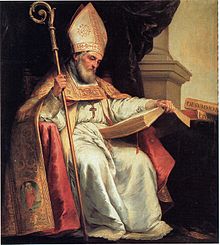
Letters are signs of things, symbols of words, whose power is so great that without a voice they speak to us the words of the absent; for they introduce words by the eye, not by the ear.
Etymologiae Bk. 1, ch. 3, sect. 1; p. 96.
And without music there can be no perfect knowledge, for there is nothing without it. For even the universe itself is said to have been put together with a certain harmony of sounds, and the very heavens revolve under the guidance of harmony.
Etymologiae Bk. 3, ch. 17, sect. 1; p. 137.
Dr. St. Bede the Venerable (672/3 –May 26, 735)
Feast: May 25
Bede became a Doctor of the Church in 1899.
He was an English monk, author and scholar. He was one of the greatest teachers and writers during the Early Middle Ages, and his most famous work, Ecclesiastical History of the English People, gained him the title “The Father of English History“. He served at the monastery of St Peter and its companion monastery of St Paul in the Kingdom of Northumbria of the Angles.
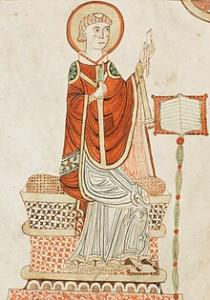
“If history records good things of good men, the thoughtful hearer is encouraged to imitate what is good: or if it records evil of wicked men, the devout, religious listener or reader is encouraged to avoid all that is sinful and perverse and to follow what he knows to be good and pleasing to God.”
― Ecclesiastical History of the English People
Dr. St. John of Damascus
(Born and raised in Damascus c. 675 or 676)
Feast: December 4
The precise date and place of his death is not known, though tradition places it at his monastery, Mar Saba, near Jerusalem on December 4, 749.
John became a Doctor of the Church in 1890.
He as an Arab Christian monk, priest, hymnographer, and apologist. A polymath whose fields of interest and contribution included law, theology, philosophy, and music, he was given the by-name of Chrysorroas (Χρυσορρόας, literally “streaming with gold”, i.e. “the golden speaker”). He wrote works expounding the Christian faith, and composed hymns which are still used both liturgically in Eastern Christian practice throughout the world as well as in western Lutheranism at Easter.
He is one of the Fathers of the Eastern Orthodox Church and is best known for his strong defence of icons. The Catholic Church regards him as the Doctor of the Assumption due to his writings on the Assumption of Mary.
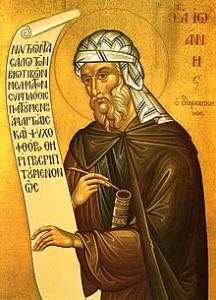
Not like Elijah have you entered heaven, not like Paul have you been rapt to the third heaven; no, you have penetrated even to the royal throne of your Son himself . . . a blessing for the world, a sanctification of the universe, refreshment for those who are tired, comfort for the sorrowing, healing for the sick, a port for those in danger, pardon for sinners, soothing balm for the oppressed, quick help for all who pray to you. . .
“Good Mistress, graciously look down on us; direct and guide our destinies wheresoever you will. Pacify the storm of our wicked passions, guide us into the quiet port of the divine will and grant us the blessedness to come.”
– Doctor and Mystic of the Assumption and Images: Saint John Damascene « Catholic Insight
Catholic Ecumenical Council # 6
The Third Council of Constantinople (680–681)
Catholic Ecumenical Council # 7
The Second Council of Nicaea (787)
Catholic Ecumenical Council # 8
Fourth Council of Constantinople (Catholic) (869–870)
Dr. St. Gregory of Narek (c. 950 – 1003/1011)
Feast: February 27
Gregory became a Doctor of the Church in 2015.
He was an Armenian mystical and lyrical poet, monk, and theologian.
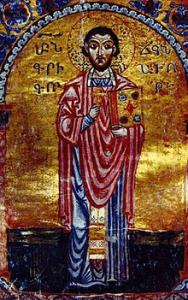
Prayer 95
By your noble and glorious blood,
offered unceasingly to please God who sent you,
may the dangers be lifted from me,
may my transgressions be forgiven,
may my vices be pardoned,
may my shamelessness be forgotten,
may my sentence be commuted,
may the worms shrivel,
may the wailing stop,
and the gnashing of teeth fall silent.
Let the laments lessen and tears dry.
Let mourning end and darkness be banished.
May the vengeful fire be stamped out
and torments of every kind exiled. …
May you who grant life to all be compassionate now.
Let your light dawn,
your salvation be swift,
your help arrive in time,
and the hour of your arrival be at hand.
Amen
ONE Magazine Cries From the Heart: Prayers of St. Gregory of Narek | CNEWA
Find out about More Saints.
The CB’s List of 2nd Millenium Catholic Saints: 1000 – 1499
The CB’s List of 2nd Millenium Catholic Saints: 1500 – 1749
HOARATS
To Understand
What I love and How I Write About History
Hit the Link Above.
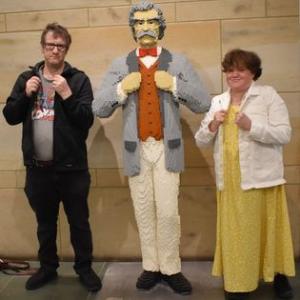
To understand about this particular series I’m writing about, please read
The Catholic Bard’s Guide To History Introduction
And to view a historical article click on



